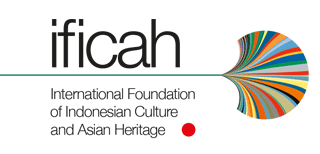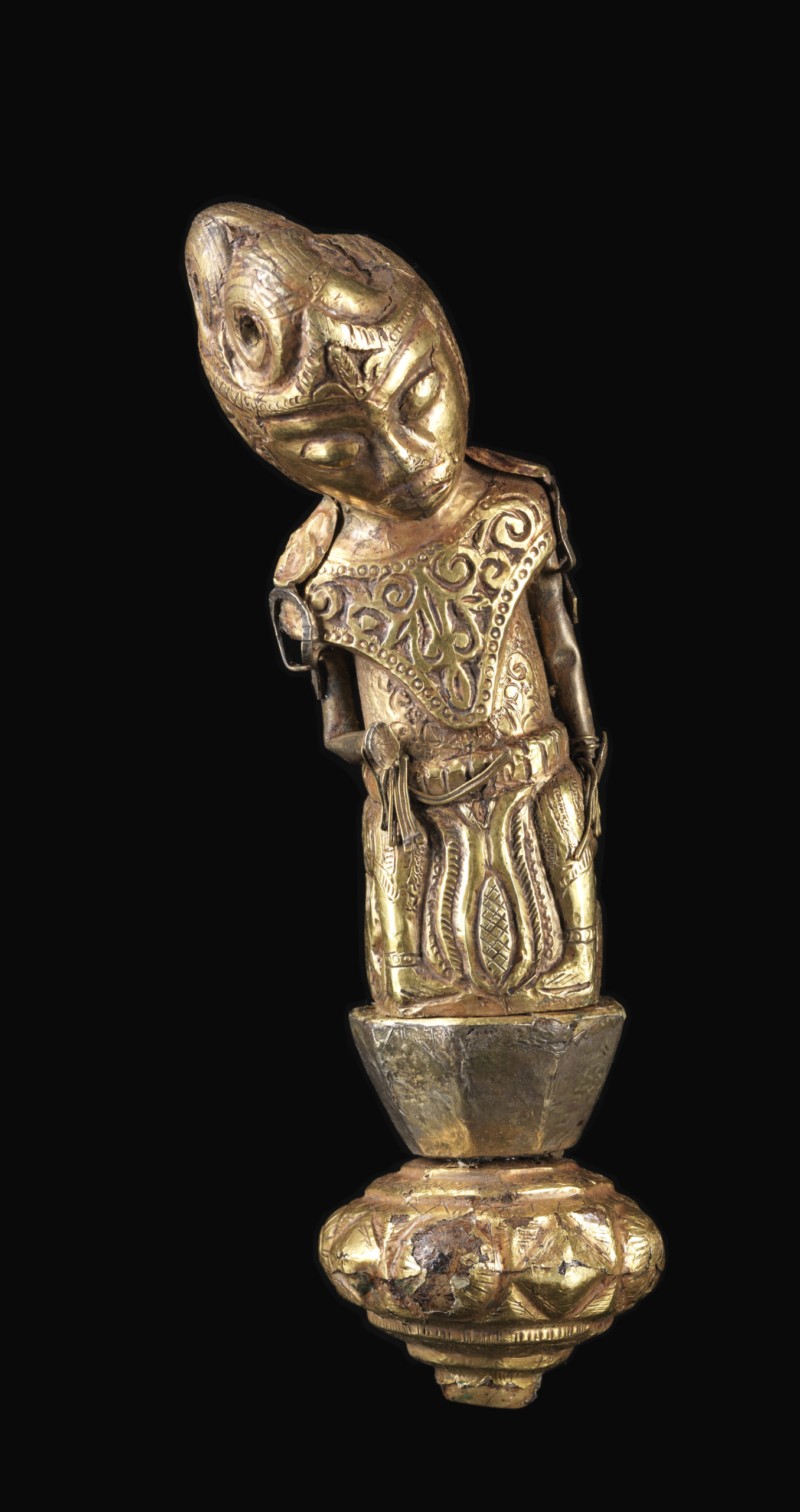Keris „keris“, „gayang“
The handle (hulu) is made of cast non-ferrous metal and depicts a person sitting in a slightly inclined position on a stylised pedestal. The high status can be recognized by the elaborate breast ornament and the high hair crown. The handle is cast in a lost form and, like the scabbard, can be addressed as Toraja work. It is oversized, very heavy or thick-walled and was obviously not intended to be worn or used. The handle base with the eight-sided base element (selut) goes back to the lotus throne of Hindu deities. The blade – not shown here – was without exception of Javanese or Macassar origin; the Toraja themselves do not forge a kris.
The wooden sheath (sarung) is covered with embossed sheet metal of a gold-bearing (?) alloy. The mouthpiece is widened and suggests a boat shape. When the kris or gayang is in the scabbard, it creates the constellation of a figure in a ship or boat. This refers to the soul journey of the deceased. The mouthpiece of the scabbard shows the stylised representation of two buffalos and a human being. In Toraja burials it was (and still is) customary to document the wealth of the deceased through multiple buffalo sacrifices during the funeral ceremonies. This is indicated by the scene. The sheet metal of the blade case is partly decorated with stylised floral motifs in hallmarking, which originally symbolised an idealised landscape.
The object type gayang is the Toraja adaptation of East Javanese state-kris from the 14th century. At that time the East Javanese empire of Majapahit ruled over large parts of the Indonesian archipelago. From the central government of Javan, state-kris were handed over to the princes of the vassal states of Makassar and Gowa in South Sulawesi and symbolised more legitimacy through Java. They indicate divine or godlike status, as the owners considered themselves descendants of Hindu Buddhist deities and thus legitimised their rule. The Toraja included these prestigious objects in their complex funeral cults. They are added to the dead or coffins (tongkonan) at secondary burials and cyclic ancestral festivals and indicate status and a significant ancestral line. The iconography and decoration of the handle figure go back to Hindu representations of princes and gods from the 13th and 14th centuries. The serene posture (lalita-sana) and the hand position with the gesture of invoking the earth originally depict a prince as Vishnu’s avatar invoking his deified ancestors.


| Object | Keris „keris“, „gayang“ |
| Culture | South to Central Sulawesi, Sa’dan Toraja |
| Time | 18th/19th century (handle possibly older) |
| Dimensions | Handle, Length 20,50 cm / Sheath, Length 45 cm |
| Material | Wood, silver foil gold plated |











